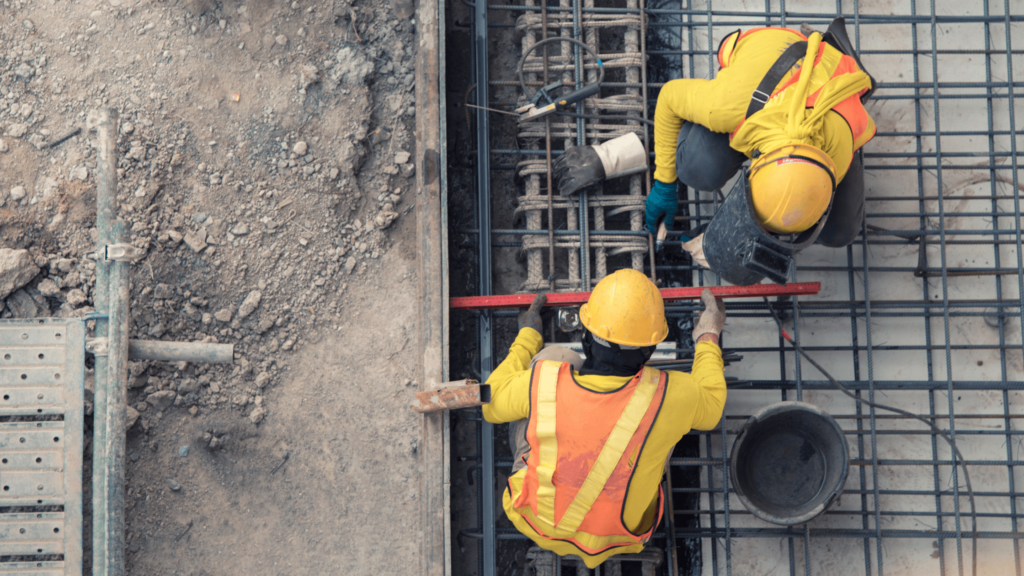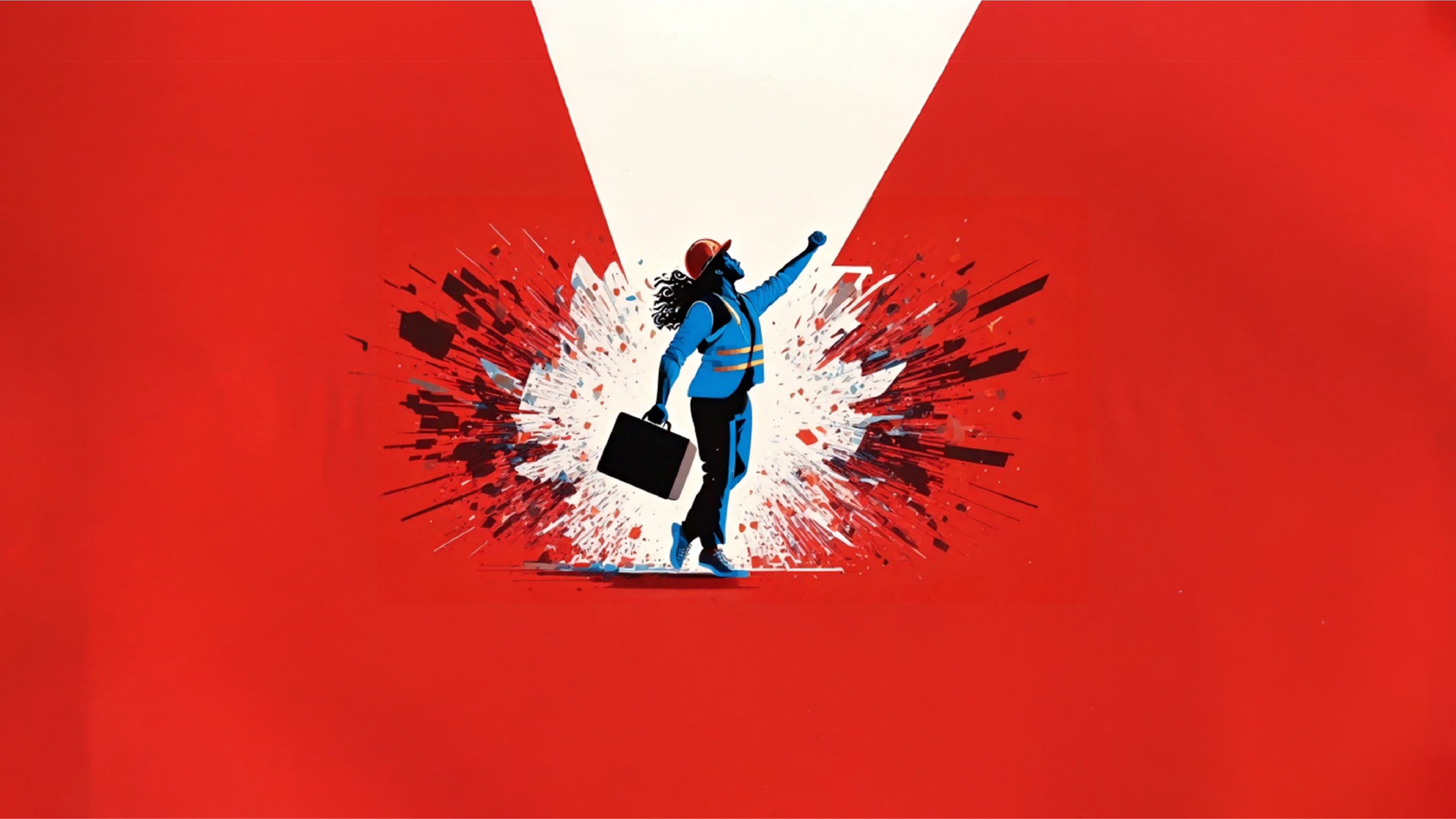Construction projects are ramping up across North America, but the industry faces a serious challenge: insufficient workers to meet demand. Outdated stereotypes about who belongs in the skilled trades keep many people from considering careers in construction, worsening labor shortages. Changing these perceptions is essential to ensuring the future success of the architecture, engineering, and construction (AEC) community.
The construction industry has long been undervalued, often viewed as “blue-collar” work with limited career opportunities. These misconceptions must be revised to capture the technical expertise and innovation driving modern construction and exclude diverse talent from joining the workforce. Addressing these biases is critical to building a more robust, more inclusive industry that reflects the realities of today’s construction landscape.
Quick look
- Misconceptions about construction deter diverse talent and contribute to critical labor shortages in the industry.
- Modern construction is a dynamic, high-tech field with competitive salaries and abundant career growth opportunities.
- Outdated stereotypes about unskilled labor and gender roles harm the industry’s reputation and limit innovation.
- Education campaigns, diversity initiatives, and school partnerships are key strategies for combating stigma and attracting a new generation of talent.
Perception vs. reality: Rethinking construction careers

The construction industry faces a significant challenge: outdated misconceptions that deter potential workers and reinforce harmful stereotypes. These perceptions tarnish the industry’s reputation and contribute to labor shortages. However, the reality of modern construction careers tells a far more compelling and inspiring story.
Perception: Construction is for the “uneducated”
The notion that construction is a career choice for the unskilled or uneducated couldn’t be further from the truth.
Reality: Modern construction demands a combination of technical expertise, problem-solving skills, and specialized knowledge. Workers must master advanced tools and technologies like Building Information Modeling (BIM) and adhere to stringent safety regulations.
Skilled tradespeople, such as electricians and plumbers, often earn salaries that rival or exceed those of college graduates. The consistent demand for urban development, infrastructure upgrades, and housing ensures construction remains a stable career choice. For example, electricians and HVAC technicians work with complex systems while project managers juggle budgets, timelines, and team coordination. Far from being “unskilled,” these roles often require formal certifications or degrees. Construction careers demand as much intellectual capability as physical skill, offering workers a chance to engage in highly technical and fulfilling work.
Perception: Women don’t belong in the trades
Gender stereotypes suggest construction is no place for women, perpetuating a culture of exclusion. A recent survey indicated that 56% of respondents believe it’s much harder for women to break into the industry.
Reality: Women excel across all levels of the industry, from skilled trades to leadership positions. Organizations like T&C GIRL are bridging the gender gap, and apprenticeship programs are seeing increased female participation. While women currently represent only about 11% of the U.S. construction workforce, their contributions are vital. High-profile projects led by women showcase their expertise, innovation, and resilience. As the industry evolves, embracing diversity is not just a necessity—it’s a strength that drives progress.
Perception: Construction lacks career growth
A common misconception is that construction offers limited opportunities for advancement or innovation.
Reality: The industry is ripe with opportunities for growth and advancement. From site management to architecture, engineering, and green building design, career pathways in construction are as varied as the projects themselves. An apprentice today can rise to become a foreperson, contractor, or even a business owner. Technological advancements, such as robotics, drones, and artificial intelligence (AI), have also introduced cutting-edge roles that didn’t exist a decade ago.
Construction isn’t stagnant—it’s an evolving field full of potential for ambitious professionals. Whether you’re interested in design, project management, sustainability, or technical innovation, the construction industry offers roles tailored to a wide range of skills and interests.
Perception: Construction is all about manual labor
Many believe construction is purely grueling physical work with little intellectual engagement.
Reality: While physical labor is part of the job, it’s only one aspect of the industry. Technology has optimized processes and automated labor-intensive tasks, reshaping how projects are planned, managed, and executed while opening doors to new, innovative careers. For example, roles like architects, engineers, and BIM specialists are highly technical and often involve managerial or creative work. Moreover, the industry prioritizes worker safety and health, with modern tools and machinery designed to reduce physical strain. Construction is where intellectual and physical skills intersect, creating rewarding opportunities for workers from all backgrounds.
The impact of these perceptions
Misconceptions about the construction industry don’t just hurt its reputation—they have tangible effects on its ability to attract and retain talent. Outdated stereotypes deter many individuals, especially younger generations, from considering careers in construction, worsening the industry’s labor shortages.
Labor shortages and the generation gap
Many younger workers view construction as an unattractive career option, often due to the belief that it offers little room for growth or doesn’t align with modern values like innovation and inclusivity. This generational gap in perception has made it increasingly difficult for the industry to replace its aging workforce. With baby boomers retiring, fewer young people are stepping up to fill the void, leaving critical roles unfilled and threatening the sector’s long-term stability.
Challenges to deadlines and costs
Labor shortages ripple through every aspect of construction projects. Fewer workers mean extended timelines, delayed project completions, and increased costs as companies scramble to fill labor gaps with overtime or subcontractors. This not only frustrates clients but also impacts businesses’ bottom lines. These delays can significantly strain resources and hinder growth in an industry already known for tight margins.
Impeding industry growth
Beyond individual projects, these labor shortages limit the industry’s ability to scale and innovate. Adopting advanced technologies and sustainable building practices slows down without fresh talent, bringing new perspectives and skills. This stagnation makes competing with other industries for top talent even harder, creating a cycle where perceptions and labor shortages reinforce each other.
Combatting stigma and attracting new talent

Changing perceptions about the construction industry requires a proactive approach. Construction leaders can break down barriers and attract a fresh, talented workforce by educating the public, fostering diversity, and showcasing the industry’s opportunities.
Education campaigns
Changing the narrative is one of the most effective ways to combat stigma. Construction isn’t just a job—it’s a career filled with cutting-edge technology, creativity, and problem-solving. Campaigns that emphasize the industry’s use of tools like AI, robotics, and sustainable practices can shift outdated views. Sharing success stories of professionals in the architecture, engineering, and construction (AEC) community, such as a project manager who started as an apprentice or a woman leading a multi-million-dollar build, can inspire new talent to see themselves in similar roles.
Encourage diversity
Diversity strengthens the construction industry, yet women, minorities, and other underrepresented groups often feel excluded due to traditional stereotypes. To counter this, companies should create programs and policies promoting inclusivity. For example, mentorship initiatives pairing experienced tradespeople with newcomers from diverse backgrounds can make the field more accessible. Highlighting role models and leaders who break the mold—like women crane operators or immigrant entrepreneurs in construction—demonstrates that everyone has a place in the trades.
Partner with schools
Engaging students early is essential for building a pipeline of future workers. Collaborating with high schools, colleges, and vocational programs can introduce students to the exciting opportunities within construction. Workshops, job shadowing, and internships give young people hands-on experience and a chance to see the industry beyond the stereotypes. Schools can also work with employers to ensure curricula align with industry needs, preparing students for successful careers.
Invest in employer branding
A strong employer brand can attract talent by showing off what makes construction exciting and fulfilling. Social media campaigns featuring innovative projects, testimonials from happy employees, and behind-the-scenes glimpses into day-to-day work can reshape public perceptions. Highlighting workplace culture—celebrating teamwork, offering flexible schedules, or supporting employee well-being—can help candidates see construction as a desirable and forward-thinking industry.
By taking these steps, the construction industry can reframe its image, appeal to a broader talent pool, and ensure a thriving workforce for years.
Bottom line
The construction industry’s perception problem is not set in stone—it’s a challenge that can be overcome with intentional efforts and innovative solutions. The AEC community can attract a new generation of talent by addressing outdated stereotypes, promoting diverse opportunities, and highlighting construction careers’ modern, high-tech nature.
Leaders in the industry have a unique opportunity to invest in changing the narrative. Whether through education campaigns, diversity initiatives, or stronger partnerships with schools, every effort to reshape perceptions brings the industry closer to securing a thriving, inclusive workforce.
If you’re passionate about shaping the future of construction, stay informed and inspired by joining our community. Subscribe to our newsletter today for the latest insights, stories, and resources tailored to the AEC industry!


